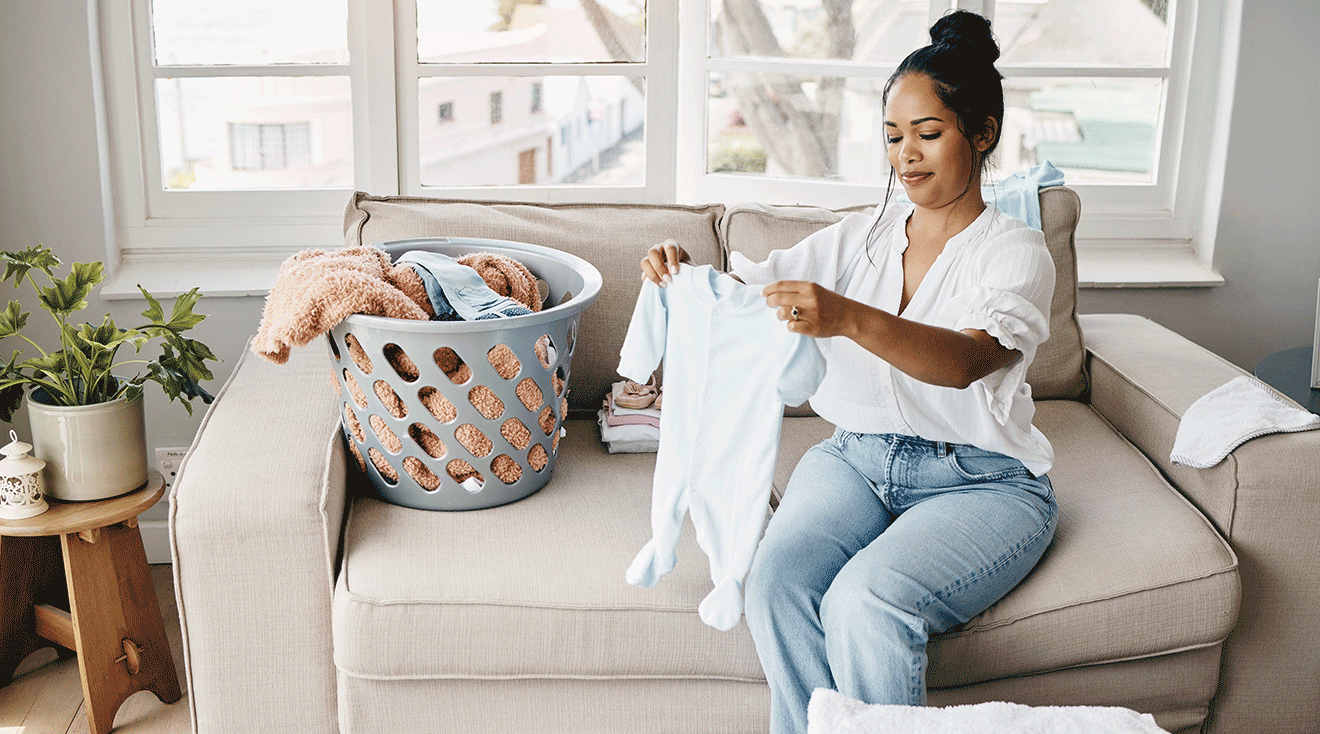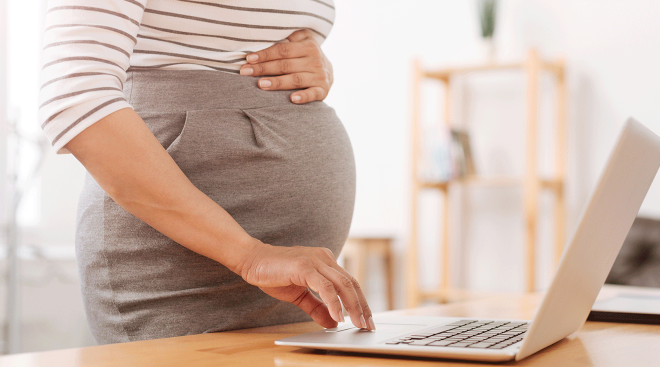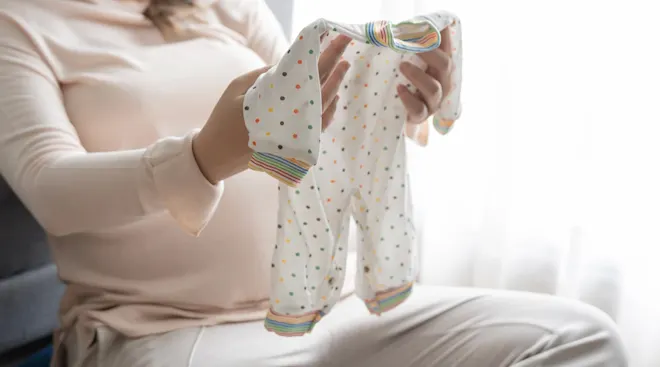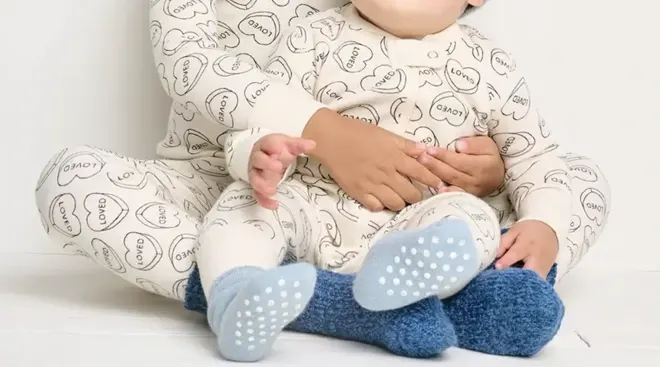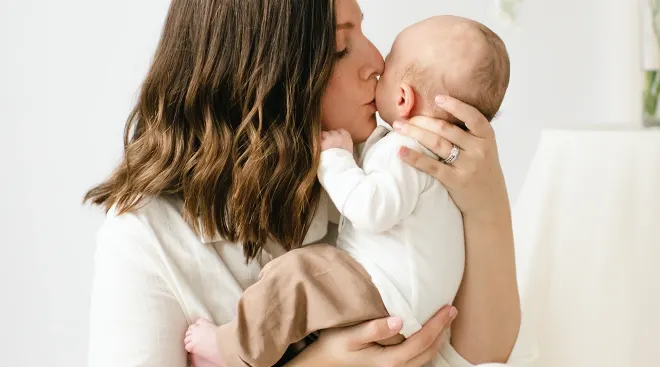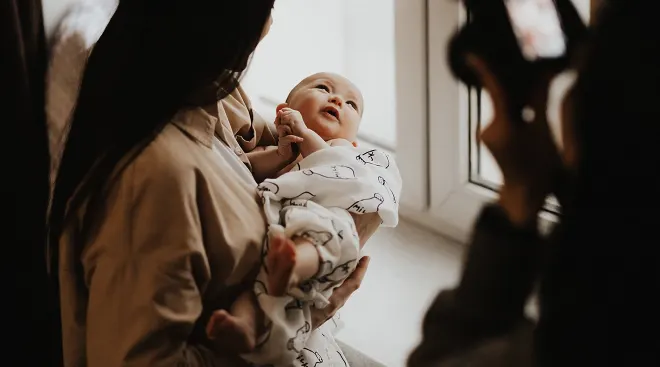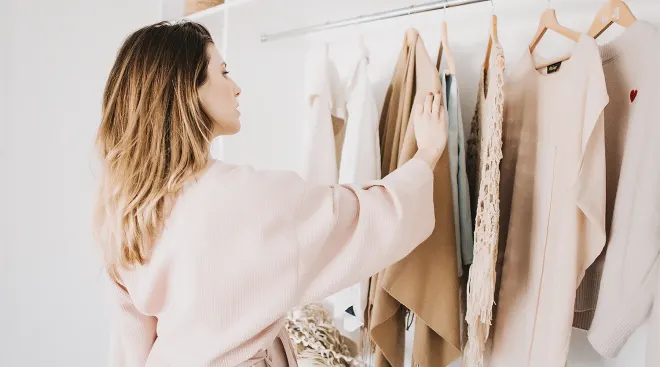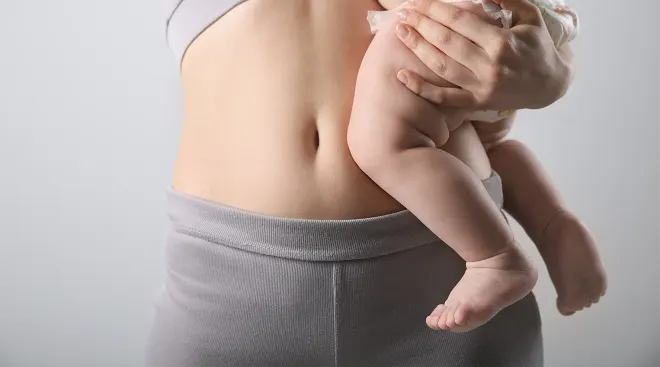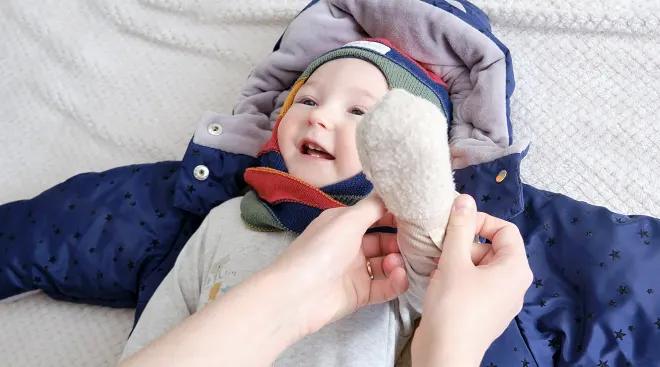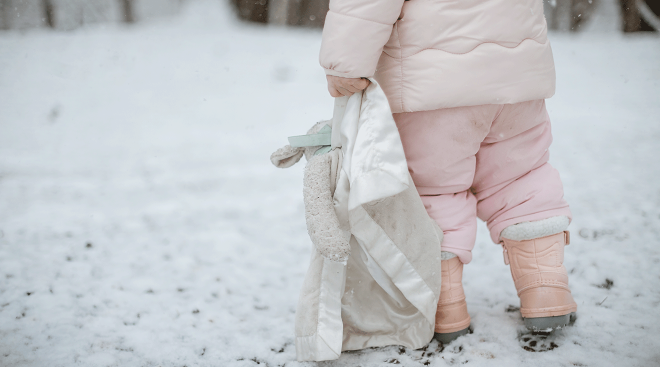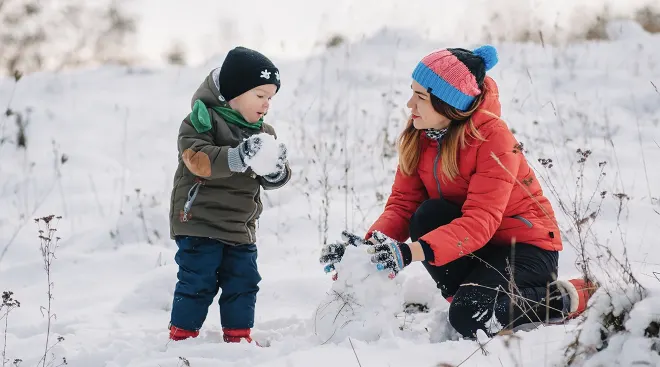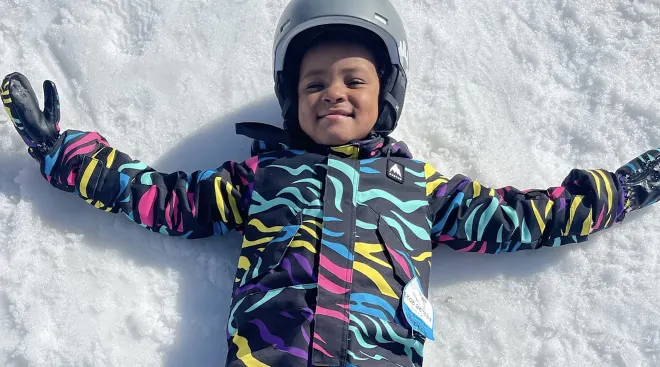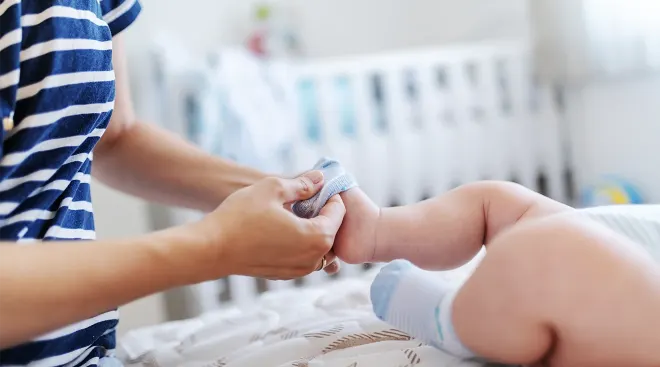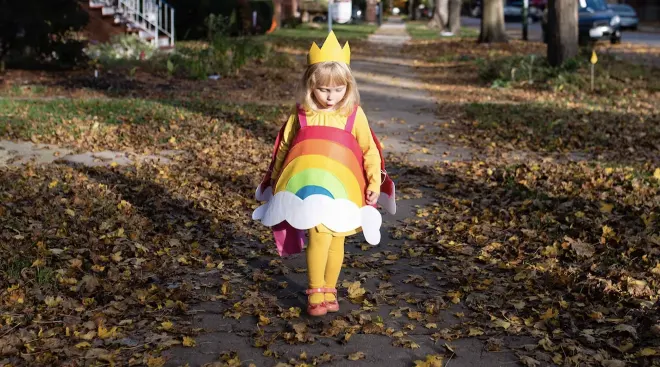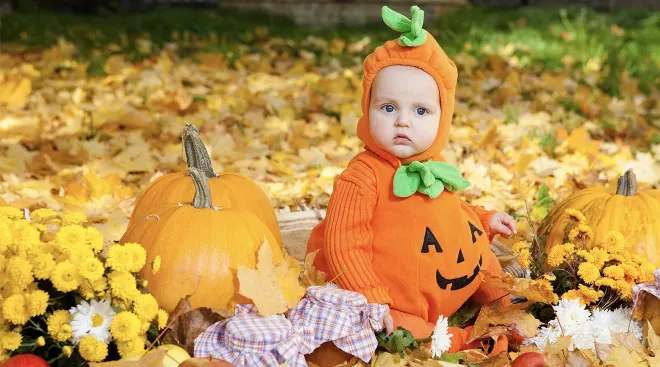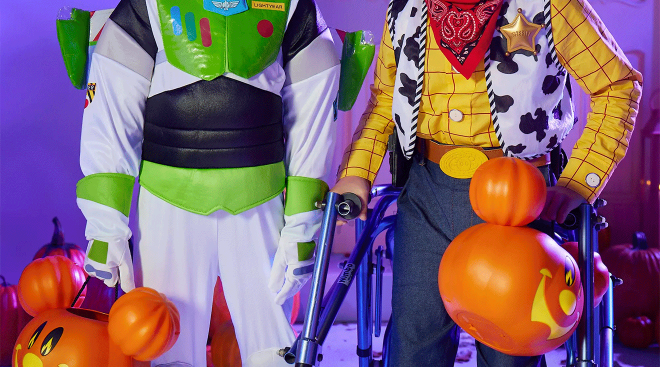Everything to Know About Washing Baby Clothes
One thing that’s guaranteed for new parents? How much laundry they’ll need to do when baby arrives on the scene. For someone so small, baby can rack up quite the laundry pile, thanks to leaky diapers, blowouts, food spills, spit up and more. That’s why it’s a good idea to get the lowdown on how to wash baby clothes before they make their messy debut.
Of course, baby’s skin can be super-sensitive—which means washing the clothing pieces that get up close and personal with their body isn’t always as simple as it sounds. Here, experts break down how to wash baby clothes—plus, tips and tricks for getting pesky stains out.
It’s a common question among parents-to-be: Should you wash baby clothes before use? According to experts, it is a good idea to pre-wash any baby clothes you buy ahead of baby’s arrival. “Infants tend to be sensitive,” says Soniya Mehra, MD, a pediatrician at Bayside Medical Group at Stanford Medicine Children’s Health. “You also don’t know what germs or chemicals the clothes were exposed to before you bought them,” especially during the manufacturing, distribution and delivery process.
As for when during pregnancy you should pre-wash baby’s clothes, Allison Cirillo, senior director of product integrity and technical design at Hanna Andersson, suggests doing so a couple of weeks to a month before delivery. “If you wash them too soon before birth, they may still collect dust before baby wears them, especially if they’re just hanging in a closet or sitting in a drawer for a while,” she explains.
How often to wash baby’s clothes
In a nutshell, you’ll ideally want to wash baby clothes every time your little one wears them. “Babies stool, spit up and spill food often, so washing after each wear is important,” Mehra says. At the very least, Cirillo recommends washing baby clothes once every week.
Wondering what to wash baby clothes with? It’s no secret that babies have sensitive skin, so you’ll want to be careful with the products you’re using. Both experts recommend using a gentle, hypoallergenic or fragrance-free detergent without any added chemicals. (Luckily, there are several baby-friendly detergents on the market that meet this criteria—just be sure to read labels clearly to ensure it’s fragrance-free and hypoallergenic.) Alongside identifying a suitable detergent for washing baby clothes, you also want to pay attention to how much is used. “You can use the measuring cup on the detergent lid to measure out the right amount of detergent,” Mehra says. “Too much detergent can leave a sticky residue on the clothes.”
Curious if scent beads and fabric softeners are okay to use? Both experts say to avoid scents, fabric softeners, bleach and dryer sheets, as these can often have fragrances and chemicals that may irritate baby’s sensitive skin.
Just like with your own clothes, you’ll want to consider the fabric when it comes to washing baby clothes. “We take a lot into consideration when choosing a fabric for baby products, as well as the care label that goes with it,” Cirillo says. “While we want to make every parent’s life easiest with how their items can be cared for, we do recommend following the care label.” Mehra agrees, saying that following an item’s care instructions can help it last longer. “Most baby clothes are 100 percent cotton, but take special care when washing more delicate pieces of clothing, such as silk, which will require a delicate wash to prevent damage or shrinking,” she says. So how can you properly wash baby clothes? Read on for detailed instructions.
In a washing machine
With the busy lives parents live, the endless to-dos on their plate and the sheer amount of laundry piles, odds are you’ll be using a washing machine to wash those baby clothes. Mehra and Cirillo recommend using gentle cycles with cool water (but, of course, refer to specific care instructions) to help protect baby’s clothes. “Put small items in laundry mesh bags so you don’t lose any rogue socks,” Mehra adds. It may also be helpful to separate out lights and darks to prevent any color bleeding.
Both experts say it’s generally okay to wash baby clothes with the rest of the family’s laundry, but, again, make sure to use a fragrance-free, baby-friendly detergent. That said, avoid adding in bedding, towels and items with Velcro (like swaddles), as these can snag on baby’s clothes, Cirillo says.
And, FYI, public laundromats are safe to use. “If you’re concerned that the machine you are using isn’t clean, simply run a cup of bleach [without clothes] through the machine in a high-heat cycle to sanitize the machine,” Cirillo says.
By hand
If you’re washing baby’s clothes by hand, Mehra recommends using a tub filled with lukewarm water and a baby-friendly detergent. Pre-treat any stains (more on this below), let the clothes soak for about 30 minutes, rinse and then let them dry.
How to dry baby clothes
Again, you’ll want to follow the care label instructions here. While tumble drying can be a huge time saver, both experts say it can make delicate items, like baby clothes, shrink. While more time consuming, they suggest line drying baby’s clothes instead. “If you prefer to use the dryer, use a lower temperature setting, and remove clothes as soon as the machine is done,” Mehra says. “Improper drying can lead to fungus or mold growth on the clothing and make the clothing smell.”
One guarantee for baby clothes is that they’ll get stained, thanks to blowouts, diaper leaks, spit up and more. But pretreating stains before washing the items is the best way to get them out. Mehra suggests rinsing the item while the stain is still fresh and then soaking it in soapy water for about a half hour. Then wash and see if the stain comes out. If it hasn’t, repeat the wash cycle, as drying may set the stain before it’s completely out. One trick for getting oil stains out? Dawn dish soap, Cirillo adds.
If you’re worried about baby’s skin, along with choosing a gentle and non-scented detergent, pay attention to what materials baby’s clothes are made out of. “Watch for any reactions after wear (redness, bumps, etc.),” Cirillo says. She adds that baby clothes with the OEKO-TEX label—which certifies it as non-hazardous—are often a safe choice for little ones and their sensitive skin. Plus, don’t hesitate to bring any concerns, questions and observations to your pediatrician.
“Washing clothes will be a chore, but clean clothes help keep baby healthy,” Mehra says. “My tip would be to purchase baby clothes with straightforward washing instructions for ease and to save time.”
Please note: The Bump and the materials and information it contains are not intended to, and do not constitute, medical or other health advice or diagnosis and should not be used as such. You should always consult with a qualified physician or health professional about your specific circumstances.
Plus, more from The Bump:
Soniya Mehra, MD, is a pediatrician at Bayside Medical Group at Stanford Medicine Children’s Health. She earned her medical degree from the University of Missouri School of Medicine Registrar and completed her residency at UCSF Fresno in California.
Allison Cirillo is the senior director of product integrity and technical design at Hanna Andersson with over 30 years of experience. She graduated with a degree in Fashion Design from Rhode Island School of Design.
Learn how we ensure the accuracy of our content through our editorial and medical review process.
Navigate forward to interact with the calendar and select a date. Press the question mark key to get the keyboard shortcuts for changing dates.

































